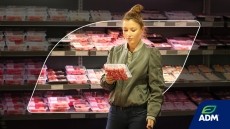Global standards on seafood traceability launched: ‘Knowing your supply chain is a must’

The Seafood Business for Ocean Stewardship (SeaBOS) and the Global Dialogue on Seafood Traceability (GDST) are working together towards the adoption of global industry standards to improve the quality, efficiency and affordability of seafood traceability.
Between them, SeaBOS and GDST include seven of the world’s ten largest seafood production companies with sales of “well over” €30 billion annually. In a joint statement, the organisations said these “unprecedented pre-competitive voluntary standards” will help the seafood sector adapt to the globalised, information-based economy and make digital seafood traceability a universal industry practice.
While seafood is one of the most globalised sectors it has lagged behind other industries – such as telecommunications and banking – in the development of voluntary, pre-competitive standards. This leaves an information hole that the new standards hope to fill.
“The globalised seafood industry needs globalised information. We are finally getting close to the pre-competitive framework we need to share information rapidly, reliably, and securely across the planet,” commented Therese Log Bergjord, CEO of Skretting.
By creating a set of voluntary industry norms, the seafood sector aims to:
- Develop shared expectations about the kinds and quality of information entering seafood supply chains;
- Ensure that fishing and aquaculture enterprises around the world receive more consistent and predictable demands for the data accompanying their products;
- Create a level playing field that promotes equitable market access for large and small producers from diverse countries;
- Establish technical protocols for interoperability that will facilitate digital communication among thousands of actors across the seafood supply chain; and
- Provide a basis for more efficient and consistent regulatory practices among producer, processor, and market country governments.
‘The business case is getting stronger and stronger’
David Schorr, senior manager of Transparent Seas Project at WWF – who is closely tied with the initiative – told FoodNavigator that the scheme reflects the growing business case for developing fully traceable supply chains.
This is underpinned by growing consumer expectations – as well as the need to de-risk the supply chain against threats like labour violations, illegal fishing and seafood fraud.
“Consumers in US and European markets have long shown an interest in the sustainability of their seafood. This is why the MSC now has more than 13% of wild capture marine catch under certification, with over 28,000 products bearing the MSC logo worldwide. And with stories about slavery on fishing vessels, illegal fishing and seafood fraud increasingly in the mainstream media, seafood companies know that they need to pay more attention to brand and supply-chain risks,” Schorr suggested.
“The business need for traceability is strong and getting stronger… Supply chain mapping is not in itself an expensive thing to do. Not knowing where your products come from, however, can be very expensive indeed.”
The need for traceability is not limited to western markets – it is an issue that is gaining traction worldwide, the sustainability expert continued. “There is a strong and growing trend towards demand for traceability in China, for example. And other major market countries, like Japan, are also actively focused on improved traceability.”
Alongside the consumer pull, retailers are also increasing pressure for enhanced levels of supply chain visibility.
German retailer Metro is among those who are backing the initiative. “Metro is a committed supporter of cross-industry collaboration to drive the development, acceptance, and implementation of digital traceability solutions in the seafood industry on a large scale,” Britta Gallus, director of supply chain programs and risk assessment, explained.
“We owe it to our oceans and future generations to work together to develop the best possible tools and practices to ensure fish and seafood sustainability as well as social standards and transparent supply chain management in the sector." - Gallus
Eliminating ‘costly’ barriers
While technological advances are paving the way to increased seafood traceability, global industry standards are “urgently needed” in order to eliminate “costly and unnecessary” barriers between incompatible, proprietary traceability systems.
Schorr noted: “The seafood sector is awash in new technologies, from on-board electronic monitoring systems to observe fishing practices to satellite based vessel tracking (and geo-location of aquaculture farms) to hand-held apps used by small scale fishermen to record their catches to electronic systems for documenting trade and fulfilling import requirements. The blockchain is another example of a hot technology that is making its way into the seafood industry.
“The point is that all these technologies need to communicate with each other if they are going to deliver value. And to do that, there have to be industry standards to guide what kinds of data will be exchanged and how different electronic platforms can communicate. That is why the GDST is about delivering the fundamental components of interoperability for seafood traceability.”
A universal standard will also serve to help guide governments towards the harmonization of standards affecting seafood trade.





























